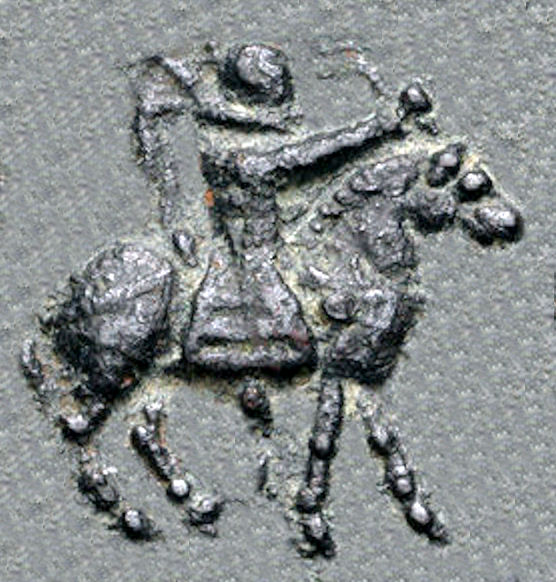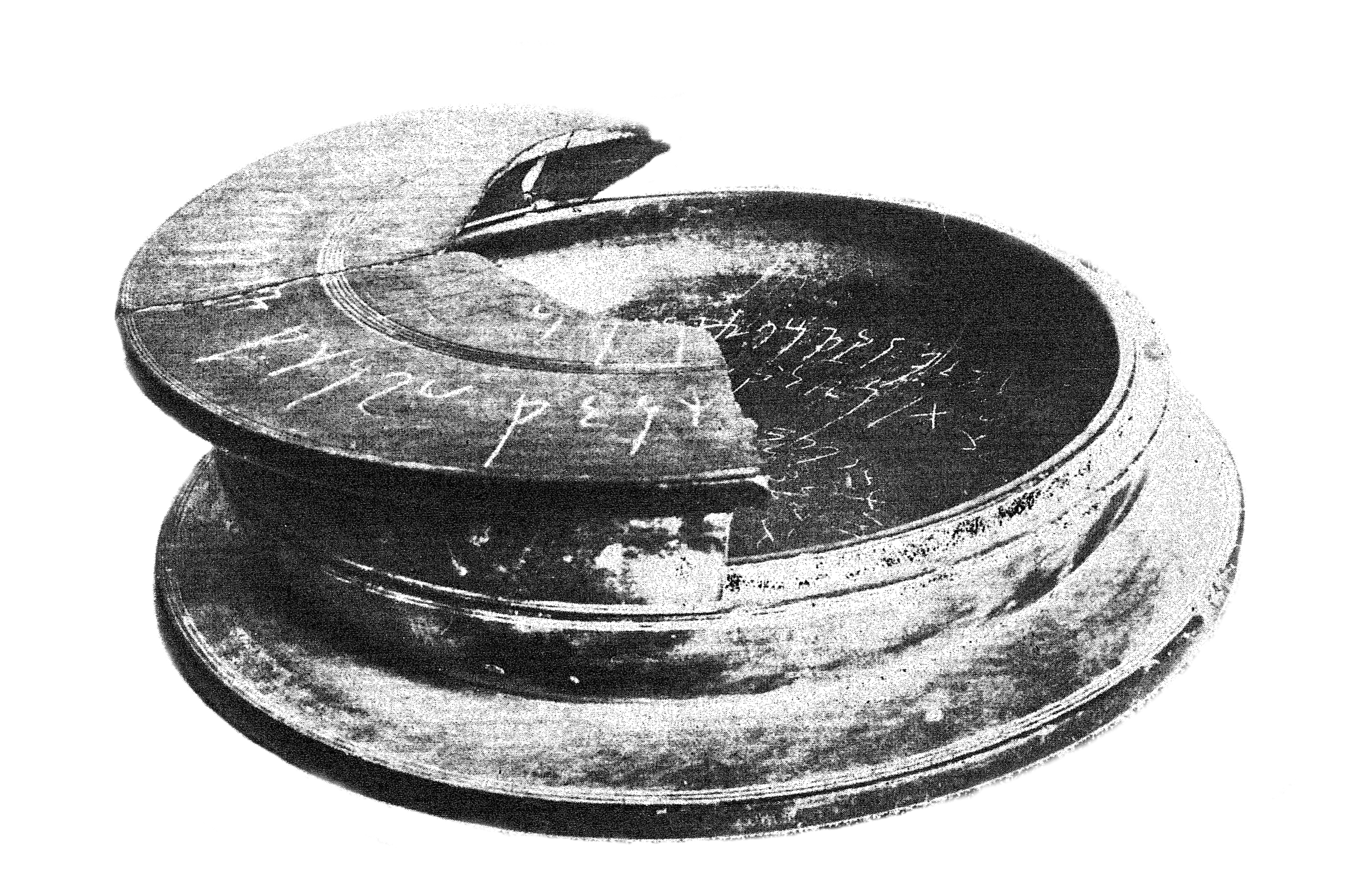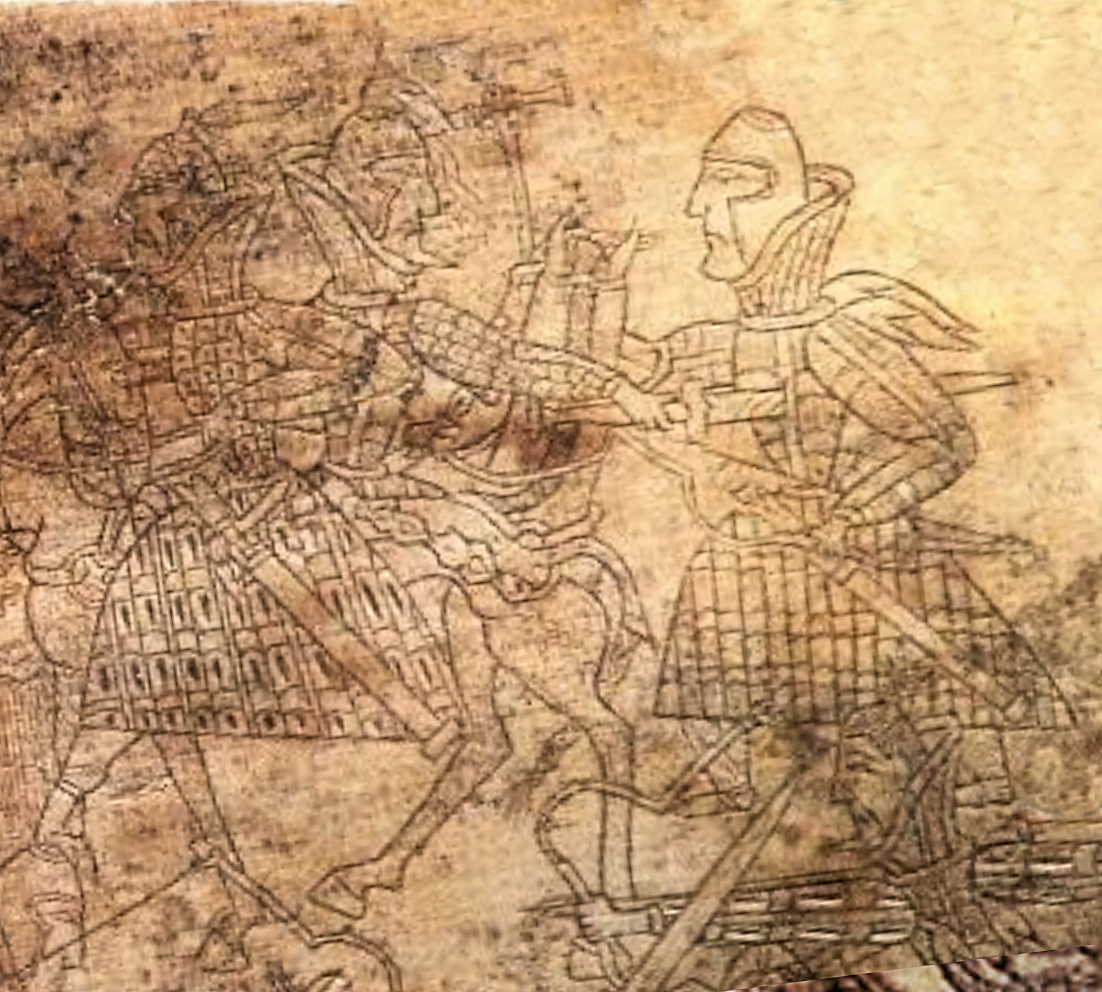|
Apraca
The Apracharajas (Kharosthi: 𐨀𐨤𐨿𐨪𐨕𐨪𐨗 ', ', 𐨀𐨤𐨕𐨪𐨗 ', ' Richard Salomon, ''An Inscribed Silver Buddhist Reliquary of the Time of King Kharaosta and Prince Indravarman'', Journal of the American Oriental Society, Vol. 116, No. 3 (Jul. - Sep., 1996), pp. 418-452), also known as Avacarajas (Kharosthi: 𐨀𐨬𐨕𐨪𐨗 ', '), were an Indo-Scythian ruling dynasty of present-day western Pakistan and eastern Afghanistan. The ''Apracharaja'' capital, known as Apracapura (also Avacapura), was located in the Bajaur district of the Khyber-Pakhtunkhwa, Pakistan. Apraca rule of Bajaur lasted from the 1st century BCE to the 1st century CE. Origins Before the arrival of the Indo-Greeks and the Indo-Scythians, Apracan territory was the stronghold of the warlike Aspasioi tribe of Arrian, recorded in Vedic Sanskrit texts as Ashvakas. The Apracas are known in history for having offered a stubborn resistance to the Macedonian invader, Alexander the Great in 32 ... [...More Info...] [...Related Items...] OR: [Wikipedia] [Google] [Baidu] |
Bajaur Casket
The Bajaur casket, also called the Indravarma reliquary, year 63, or sometimes referred to as the Avaca inscription, is an ancient reliquary from the area of Bajaur in ancient Gandhara, in the present-day Federally Administered Tribal Areas of Pakistan. It is dated to around 5-6 CE.Metropolitan Museum of Art. It proves the involvement of the Scythian kings of the Apraca, in particular King Indravarman, in Buddhism. The casket is made of schist. The inscription which is written in Kharoshthi: The inscription was highly useful in clarifying the little-known Apraca dynasty. Notes References *Baums, Stefan. 2012. “Catalog and Revised Texts and Translations of Gandharan Reliquary Inscriptions.” In: David Jongeward, Elizabeth Errington, Richard Salomon and Stefan Baums, ''Gandharan Buddhist Reliquaries'', pp. 207–208, Seattle: Early Buddhist Manuscripts Project (Gandharan Studies, Volume 1). *Baums, Stefan, and Andrew Glass. 2002– ''Catalog of Gāndhārī Texts'' noCKI ... [...More Info...] [...Related Items...] OR: [Wikipedia] [Google] [Baidu] |
Indravarman
Indravarman or Indravarma (Kharosthi: 𐨀𐨁𐨎𐨡𐨿𐨪𐨬𐨪𐨿𐨨 ', '), also called Itravasu on his coinage, was an Indo-Scythian king of the Apracas, who ruled in the area of Bajaur in modern northwestern Pakistan. He was the son of Vispavarma.''The World's Writing Systems'' Peter T. Daniels, William Bright, Oxford University Press, 1996, p.382 Indravarma had a son, Aspavarma, commander and later king, known from an inscription discovered at . Aspavarma also mentioned his father Indravarma on some of his coins. Bajaur casket Indravarman is mainly known ...[...More Info...] [...Related Items...] OR: [Wikipedia] [Google] [Baidu] |
Vijayamitra
Vijayamitra (ruled 12 BCE - 20 CE) was an Indo-Scythian king of the Apracas who ruled in the north-western region of ancient India, located in Bajaur of modern Pakistan. Rukhana reliquary Vijayamitra is mentioned in a recently discovered inscription in Kharoshthi on a Buddhist reliquary (the " Rukhana reliquary", published by Salomon in 2005), which gives a relationship between several eras of the period, and especially gives confirmation of a Yavana era in relation to the Azes era: :"In the twenty-seventh - 27 - year in the reign of Lord Vijayamitra, the King of the Apraca; in the seventy-third - 73 - year which is called "of Azes", in the two hundred and first - 201 - year of the Yonas (Greeks), on the eighth day of the month of Sravana; on this day was established hisstupa by Rukhana, the wife of the King of Apraca, ndby Vijayamitra, the king of Apraca, ndby Indravarma ( Indravasu?), the commander (stratega), ogetherwith their wives and sons." This dedication indicate ... [...More Info...] [...Related Items...] OR: [Wikipedia] [Google] [Baidu] |
Shinkot Casket
The Shinkot casket, also Bajaur reliquary of the reign of Menander, is a Buddhist reliquary from the Bajaur area in Gandhara, thought to mention the reign of the 2nd century BCE Indo-Greek king Menander I. The steatite casket is said to have contained a silver and a gold reliquary at the time of discovery, but they have been lost. Inscription This casket is probably the oldest known inscribed Buddhist relic casket from the area of Gandhara. One of its inscriptions, in the place of honour on the lid, mentions: ''Minedrasa maharajasa kaṭiasa divasa 44411'', being translated as "On the 14th day of Kārtikka, in the reign of the Maharaja Minadra", the ''Maharaja'' ("Great King") ''Minadra'' in question being Menander. Menander is otherwise known from his coins, which are generally bilingual in Greek and Kharoshthi, where his Kharoshthi name is given as ''Menadra''. On his coinage, the full title of king Menander appears as ''Menadrasa Maharajasa Trataresa'' "Saviour Great King Men ... [...More Info...] [...Related Items...] OR: [Wikipedia] [Google] [Baidu] |
Bajaur
Bajaur District ( ps, باجوړ ولسوالۍ, ur, ) is a district in Malakand Division of Khyber Pakhtunkhwa province in Pakistan. Until 2018, it was an agency of the Federally Administered Tribal Areas, then during restructuring that merged FATA with Khyber Pakhtunkhwa, it became a district. According to the 2017 census, the population of the district is 1,093,684. It borders Afghanistan's Kunar Province with a 52 km border. The headquarters of the agency administration is located in the town of Khar. Geography Bajaur is about long by broad. It lies at a high elevation to the east of the Kunar Valley of Afghanistan and Pakistan, from which it is separated by a continuous line of rugged frontier hills, forming a barrier that is easily passable at one or two points. The old road from Kabul to Pakistan ran through the barrier before the Khyber Pass was adopted as the main route. Nawagai is the chief town of Bajour; the Khan of Nawagai was previously under British p ... [...More Info...] [...Related Items...] OR: [Wikipedia] [Google] [Baidu] |
Indo-Scythian
Indo-Scythians (also called Indo-Sakas) were a group of nomadic Iranian peoples of Scythian origin who migrated from Central Asia southward into modern day Pakistan and Northwestern India from the middle of the 2nd century BCE to the 4th century CE. The first Saka king of India was Maues/Moga (1st century BCE) who established Saka power in Gandhara, Pakistan and the Indus Valley. The Indo-Scythians extended their supremacy over north-western India, conquering the Indo-Greeks and other local kingdoms. The Indo-Scythians were apparently subjugated by the Kushan Empire, by either Kujula Kadphises or Kanishka. Yet the Saka continued to govern as satrapies, forming the Northern Satraps and Western Satraps. The power of the Saka rulers started to decline in the 2nd century CE after the Indo-Scythians were defeated by the Satavahana emperor Gautamiputra Satakarni. Indo-Scythian rule in the northwestern Indian subcontinent ceased when the last Western Satrap Rudrasimha III was defe ... [...More Info...] [...Related Items...] OR: [Wikipedia] [Google] [Baidu] |
Indo-Scythians
Indo-Scythians (also called Indo-Sakas) were a group of nomadic Iranian peoples of Scythian origin who migrated from Central Asia southward into modern day Pakistan and Northwestern India from the middle of the 2nd century BCE to the 4th century CE. The first Saka king of India was Maues/Moga (1st century BCE) who established Saka power in Gandhara, Pakistan and the Indus Valley. The Indo-Scythians extended their supremacy over north-western India, conquering the Indo-Greeks and other local kingdoms. The Indo-Scythians were apparently subjugated by the Kushan Empire, by either Kujula Kadphises or Kanishka. Yet the Saka continued to govern as satrapies, forming the Northern Satraps and Western Satraps. The power of the Saka rulers started to decline in the 2nd century CE after the Indo-Scythians were defeated by the Satavahana emperor Gautamiputra Satakarni. Indo-Scythian rule in the northwestern Indian subcontinent ceased when the last Western Satrap Rudrasimha ... [...More Info...] [...Related Items...] OR: [Wikipedia] [Google] [Baidu] |
Azes II
Azes II ( Greek: , epigraphically ; Kharosthi: , ), may have been the last Indo-Scythian king, speculated to have reigned circa 35–12 BCE, in the northern Indian subcontinent (modern day Pakistan). His existence has been questioned; if he did not exist, artefacts attributed to his reign, such as coins, are likely to be those of Azes I. After the death of Azes II, the rule of the Indo-Scythians in northwestern India and Pakistan finally crumbled with the conquest of the Kushans, one of the five tribes of the Yuezhi who had lived in Bactria for more than a century, and who were then expanding into India to create a Kushan Empire. Soon after, the Parthians invaded from the west. Their leader Gondophares temporarily displaced the Kushans and founded the Indo-Parthian Kingdom that was to last until the middle of the 1st century CE. The Kushans ultimately regained northwestern India circa 75 CE, where they were to prosper for several centuries. Name Azes's name is attested ... [...More Info...] [...Related Items...] OR: [Wikipedia] [Google] [Baidu] |
Scythian Language
The Scythian languages are a group of Eastern Iranian languages of the classical and late antique period (the Middle Iranian period), spoken in a vast region of Eurasia by the populations belonging to the Scythian cultures and their descendants. The dominant ethnic groups among the Scythian-speakers were nomadic pastoralists of Central Asia and the Pontic–Caspian steppe. Fragments of their speech known from inscriptions and words quoted in ancient authors as well as analysis of their names indicate that it was an Indo-European language, more specifically from the Iranian group of Indo-Iranian languages. Most of the Scythian languages eventually became extinct, except for modern Ossetian (which descends from the Alanian dialect of Scytho-Sarmatian), Wakhi (which descends from the Khotanese and Tumshuqese forms of Scytho-Khotanese), and Yaghnobi (which descends from Sogdian). Alexander Lubotsky summarizes the known linguistic landscape as follows: Classification ... [...More Info...] [...Related Items...] OR: [Wikipedia] [Google] [Baidu] |
Prakrit
The Prakrits (; sa, prākṛta; psu, 𑀧𑀸𑀉𑀤, ; pka, ) are a group of vernacular Middle Indo-Aryan languages that were used in the Indian subcontinent from around the 3rd century BCE to the 8th century CE. The term Prakrit is usually applied to the middle period of Middle Indo-Aryan languages, excluding earlier inscriptions and the later Pali. ''Prākṛta'' literally means "natural", as opposed to '' saṃskṛta'', which literally means "constructed" or "refined". Prakrits were considered the regional spoken (informal) languages of people, and Sanskrit was considered the standardized (formal) language used for literary, official and religious purposes across Indian kingdoms of the subcontinent. Literary registers of Prakrits were also used contemporaneously (predominantly by śramaṇa traditions) alongside Classical Sanskrit of higher social classes. Etymology The dictionary of Monier Monier-Williams (1819–1899), and other modern authors however, interpr ... [...More Info...] [...Related Items...] OR: [Wikipedia] [Google] [Baidu] |
Ancient Greek Religion
Religious practices in ancient Greece encompassed a collection of beliefs, rituals, and mythology, in the form of both popular public religion and cult practices. The application of the modern concept of "religion" to ancient cultures has been questioned as anachronistic. The ancient Greeks did not have a word for 'religion' in the modern sense. Likewise, no Greek writer known to us classifies either the gods or the cult practices into separate 'religions'. Instead, for example, Herodotus speaks of the Hellenes as having "common shrines of the gods and sacrifices, and the same kinds of customs." Most ancient Greeks recognized the twelve major Olympian gods and goddesses—Zeus, Hera, Poseidon, Demeter, Athena, Ares, Aphrodite, Apollo, Artemis, Hephaestus, Hermes, and either Hestia or Dionysus—although philosophies such as Stoicism and some forms of Platonism used language that seems to assume a single transcendent deity. The worship of these deities, and severa ... [...More Info...] [...Related Items...] OR: [Wikipedia] [Google] [Baidu] |






